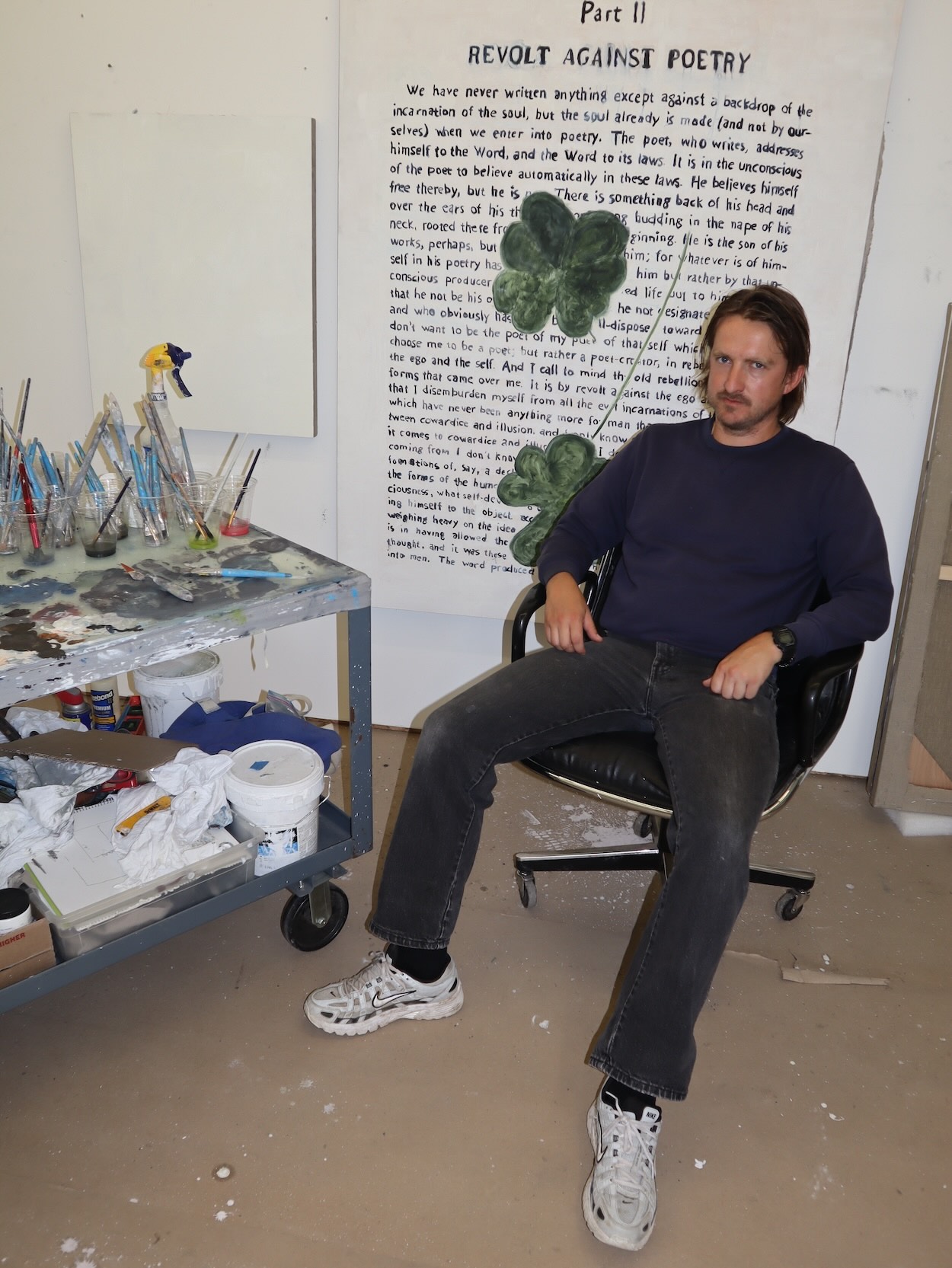Here, we ask an artist about the essential details behind a recent work.
Bio: Phil Davis, 35, Los Angeles
Title of work: Untitled (2024).
Where to see it: “Chorus” at Fernberger Gallery (747 N Western Ave Suite B.), Los Angeles, until July 3.
Three words to describe this work: Redolent, histrionic, metal.
What was on your mind at the time: I was looking for source imagery for my show. When I found this, I thought it was a perfect moment wherein the origin story of the reference image illuminates the complexities within. When choosing imagery to paint, I’m always looking to create a situation where things we thought we knew and took for granted unexpectedly change. The skull and crossbones or Jolly Roger, a graphic that can be viewed as something of a cartoon or for children, is actually being made here by an American soldier in a French gravesite in World War I. The painting holds two ideas at once; the recognizable icon and the knots and folds of humanity behind it.
An interesting feature that’s not immediately noticeable: In this piece, and in all my work, a thing happens where you see the painting and the image within it, you recognize it to varying degrees and as you step closer, the image dissolves. Upon looking at the work head-on, the symbol loosens and becomes an arrangement of strokes. This replicates how iconography dissolves into peculiar and complicated sets of circumstances upon learning about their origins.
How the work reflects your practice as a whole: The seeming incompleteness signifies the failure of the mediated image to adequately represent the complexity of personal identity, and in this case, the horror or guilt of history. Ultimately, it’s about how strange the world is.
One song that captures the work’s essence: “Night Of The Assassins” by Les Rallizes Dénudés. It’s heavy and unrelenting, but anchored by a teenager pop bass-line reminiscent of The Ronettes or something similar. The repetition sounds innocent but becomes almost violent.

